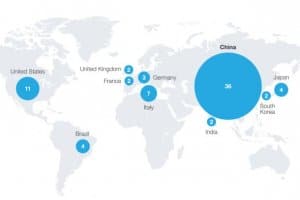By Fabien Gaussorgues

Primary (or disposable) batteries are non-rechargeable cells — mostly 1.5V and dedicated to toys and other products that don’t need battery replacement on a daily basis.
We recently did some research on this product line, and I thought a general introduction might be interesting to a few readers.
The most common types of primary batteries are alkaline/zinc-carbon (round shape) and lithium metal (button shape). The price varies from 0.05 to 0.4 USD per Ah (Ampere hours are the measure of a battery’s capacity).
The cheapest batteries are exclusively manufactured in China, while the best ones are mostly made in Indonesia and in Taiwan.
It is important to understand that capacity depends on the application and on the loading current. A 1,600mAh AAA battery will provide less than 1,000mAh when high power is needed and more with a very low power application. This is the reason most manufacturers don’t mention the capacity on the battery label.
When it comes to choosing a manufacturer, there are 2 important factors:
- The global performance and the maturity of the quality system
- The extent to which the manufacturing process is focused on achieving low costs (at the expense of quality)
In the supplier selection process, buyers should define what criteria are most important for the final application. Standard requirements for a battery are the capacity in Ah (or mAh), the maximum current, and the number of defects. However, going into a deeper analysis, while applying value engineering principles, is often the key to making a good decision.
Let’s take the example of an importer looking for a battery capable of lasting for more than 10 years. No suppliers, even the Japanese, can promise such a lifetime (the risks are insufficient capacity, especially at low temperatures, and leakage).
The capacity risk can be addressed by a mix of measurements and electric analyses. The leakage risk, though, is more difficult to tackle.
Chinese manufacturers typically don’t work hard on avoiding leakages. Their processes are not robust in this respect. But some other factories know that leakage is a high risk for some customers, and implement either an extra sealing or screening step.
Finding a supplier in China, like anywhere else, necessitates to understand the exact cost & quality needs first. One advantage of Chinese sourcing is the high number of manufacturers with a very wide offer in terms of quality and performance.





No comments:
Post a Comment